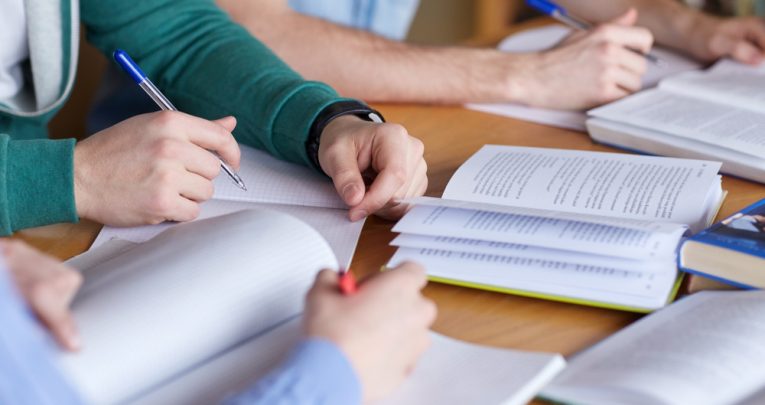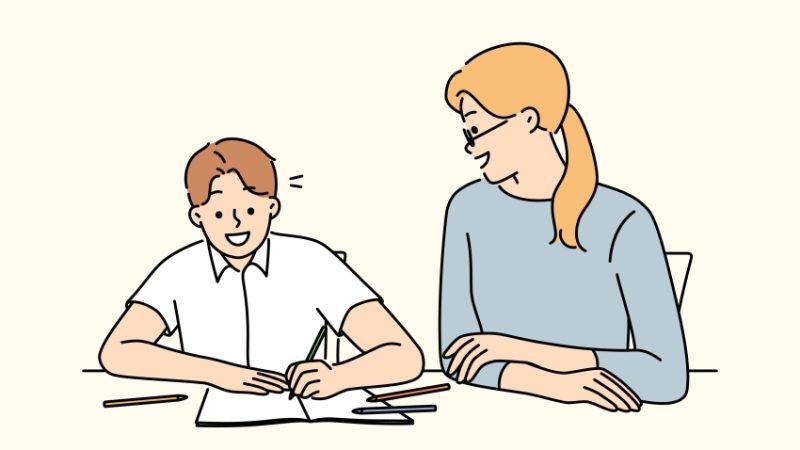Pedagogy And The Page – How Can Secondary Textbooks Be Made More Engaging?

What are the pedagogical features that really work in textbooks? Michael McGarvey assesses the options…

When we talk about ‘pedagogical features’ in textbooks, we are talking about those extra properties which are put in place to assist a student’s learning on a certain topic or process. They can broadly be separated into three categories:
• Those which assist with organisation. This may include a checklist, a table of figures or a table of contents.
• Those which provide additional content or a different approach to the same content, such as a timeline, maps or case studies.
• Those which assist with the practise of a concept or technique, such as discussion prompts, worked examples or quizzes.
When teachers are looking for textbooks to use within their own classrooms, they should start by identifying the challenges students face. Then, aim to choose textbooks with pedagogical features designed to overcome these. The pedagogy researchers I work with at Cambridge University Press have done extensive research into different pedagogical features, and their impact on student success, a few of which I will explore here.
Quizzes
The effectiveness of quizzes on student learning depends on how they are used, and their impact on classroom success can depend on many different factors – at what point during the course the quizzes are administered, whether they are taken in or out of class, the number of attempts permitted by the quiz system, and the type and timing of the feedback.
Students often rate online quizzes as one of the most helpful pedagogical features, but this perception doesn’t always match the reality of the outcome, and the way in which they are used is very important.
When students rely on quizzes to learn classroom material, and spend more time taking and re-taking them to achieve better and better results, this has a negative impact on their exam performance. But when students use quizzes to identify areas of difficulty, then go back and study that particular material more closely, the impact on their results is positive.
Signalling
Some of the most effective pedagogical features are the simplest, like signalling. Signalling is a writing device which highlights part of the structure or content of a longer text. Generally, it is something that can be removed from the text, like a pop up box including a key term, hint or vocabulary, without undermining the cohesiveness of the wider text.
Content that is signalled within a textbook with a one or two line summary has been found to be better retained than non-signalled content, and is often a feature teachers look for when choosing the most useful textbooks for their classes. However, it should be noted that this improved performance is limited to the content in the highlighted text boxes, and may be retained at the expense of unsignalled information if efforts aren’t made to keep it in context with the course material more generally.
Signals are most effective for students when they are used for unfamiliar topics. A student with a secure background in a subject would not necessarily be influenced by the use of boxes signalling content, but a student reading about a subject they are new to would be. There is a particular benefit to putting especially important information, such as key concepts, in feature boxes for students who are working to a lower level.
Multimedia
Learning resources which embrace multimedia can be excellent tools to use alongside textbooks, as they can prove highly engaging for students, who may be more likely to remember an animation, a video, or interacting an app than they are to remember reading a paragraph. Multimedia allows for demonstration of a concept, which can be repeated in a student’s own time.
While there is some debate as to whether multimedia has a significant impact on students’ academic performance – positively or negatively – we know it is best harnessed when used to enhance what’s already been covered in lessons or in a textbook.
This could mean adding additional content which builds on existing knowledge, or a different approach to content that students have previously been exposed to. Otherwise, there is a danger that multimedia materials will lead to distraction, with students becoming more engaged in the platforms themselves than they are in the content.
Michael McGarvey has over 20 years of experience in the global education sector, and currently works as the Director of UK Education at Cambridge University Press












